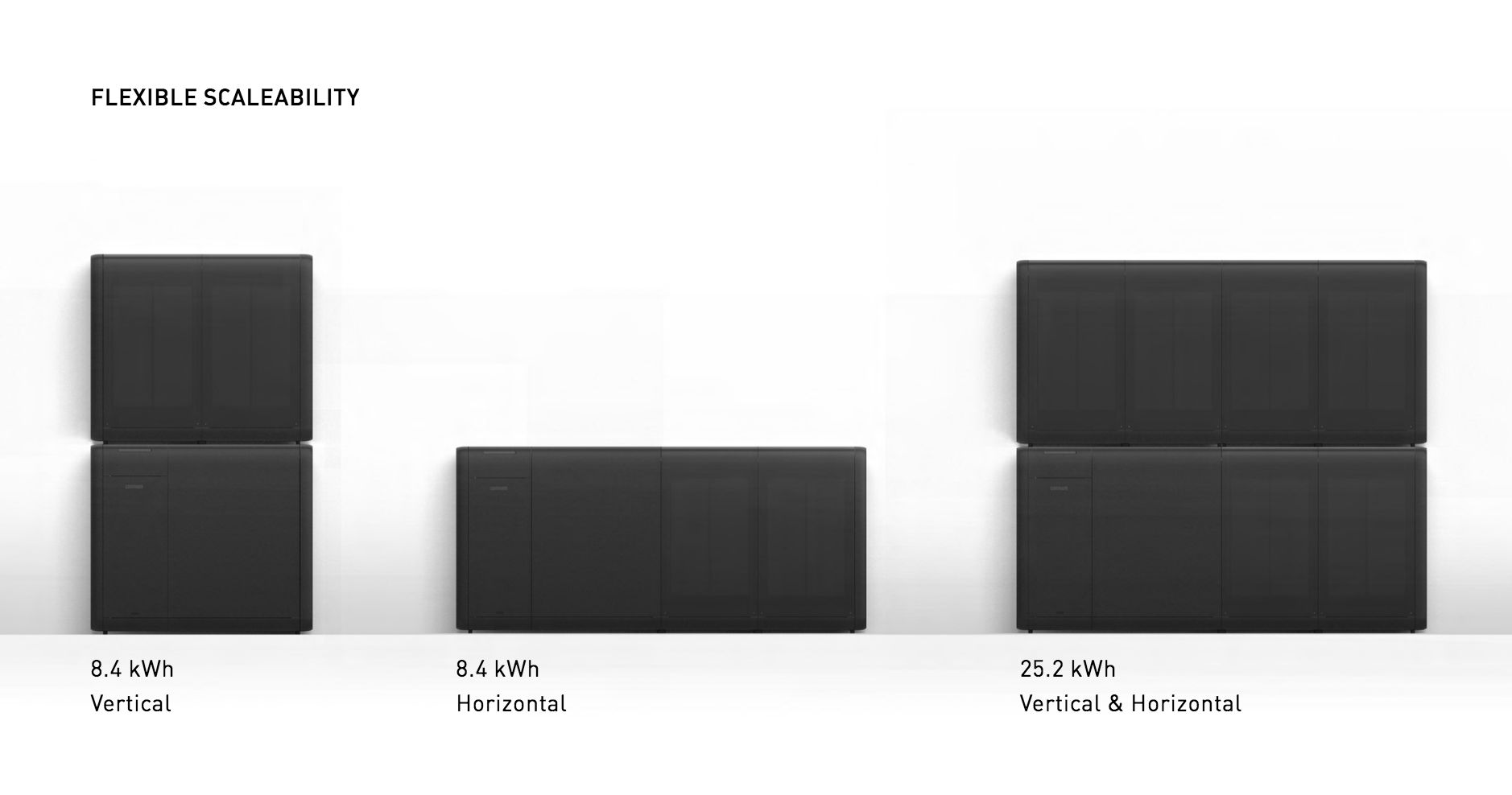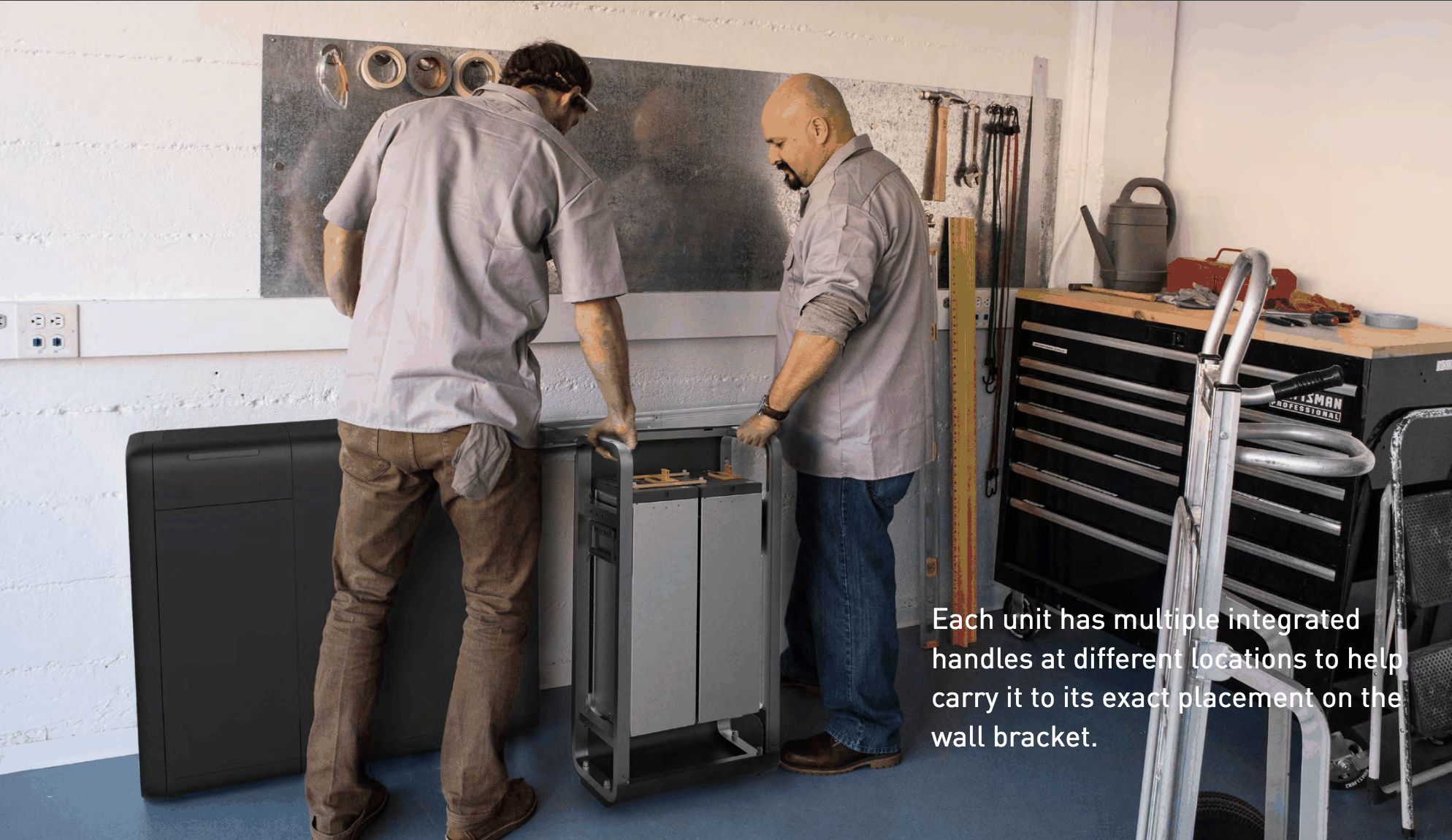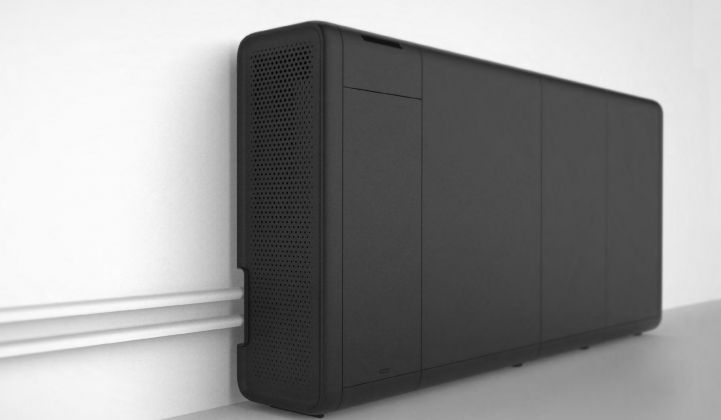Henk Rogers likes fitting things together.
That instinct helped him out packing furniture into moving trucks for his first job out of high school. It helped him develop the block-stacking video game Tetris into a globe-spanning juggernaut. And now he's applying it to a new battery system that stacks and extends to slide perfectly into a customer’s home.
The Blue Ion Continuum battery, announced Thursday by Rogers’ Hawaii-based company Blue Planet Energy and expected out in the first quarter of next year, comes in modular segments that can grow with the needs of the family. The most basic configuration comes with an inverter and 8 kilowatt-hours of storage, but the additional battery units can be added vertically or horizontally at any time. Think of it as a home storage version of the Tetris challenge:How do you slide the blocks into space so they all fit optimally?
“It’s a constructive game, and this is a constructive product,” Rogers said during an interview at the launch event in Palo Alto. “I like construction rather than destruction.”
The basic package, dubbed Power On, comes with an inverter and two connected battery blocks, totaling 8 kilowatt-hours of energy storage (as compared to Tesla’s 6.4-kilowatt-hour Powerwall).
If the family and its electricity demand grow, the customers can simply add another 4-kilowatt-hour battery unit, or more -- the inverter can accept up to six of those units. This isn't the first modular system. Enphase, for instance, offers a similar functionality, but only in Australia and New Zealand. The modularity, though, differentiates this battery concept from others on the market: Instead of buying multiples of the same bulky unit to gain more capacity, customers can expand the Continuum and it will still look like an organic whole.
That 8-kilowatt-hour plug-and-play system costs $12,950, plus installation costs. That puts it at a higher price point than the Powerwall, but Blue Planet insists that the lifecycle costs are lower for its product because it will last longer. The Continuum comes with a warranty guaranteeing 75 percent capacity after 15 years, with no limit on the number of cycles per year. The Powerwall warranty lasts 10 years. The Continuum's full life expectancy is 8,000 cycles, so if the battery cycles once per day, its should last almost 22 years.

Photo credit: Blue Planet Energy
The Palo Alto-based design firm Ideo orchestrated a casing for the batteries to minimize installation time. The battery units have built-in handles and weigh about 100 pounds, so that two workers can carry them into a house. They sit on the ground rather than adding weight to a home wall. The insides are all wired, so the only electrical needs are ensuring there's a place to plug it in. All in all, installation and plug-in takes 20 minutes, the company said.
The system runs on lithium ferrous phosphate battery units from Sony, which don’t get hot during operation and thus don’t need additional cooling systems. They also work in solid state, which minimizes the chances that something breaks down compared to a system with more moving parts. That hardiness serves well in isolated island environments; Rogers says he wants to bring it to islands throughout the Pacific.
The particular battery chemistry has benefits compared to other recipes, like Tesla’s lithium cobalt manganese, Rogers noted.
“Iron and phosphate are cheap and benign,” he said. “Manganese and cobalt are expensive and dangerous.”
Sony, the early leader in commercial lithium-ion batteries, recently sold its battery business to Murata Manufacturing. That doesn’t worry the folks at Blue Planet Energy. If anything, they’re excited to see the battery production move to a company with the bandwidth to invest in it.
“Sony's got too many things, they realize they can't, at this point, throw a couple billion dollars to ramp up,” Rogers said. “They need to increase their manufacturing capacity by orders of magnitude to meet the upcoming demand. […] Murata makes parts, so they've got millions of dollars of extra money at this point in time.”

Photo credit: Blue Planet Energy
A family of products
The Continuum is available for preorder now and will ship early next year. Blue Planet partners with solar installers to carry out the battery deployments.
The battery cells from Japan will be manufactured into the Continuum in China and shipped from there. Blue Planet will initially focus on the California and Hawaii markets, where the economics are currently most favorable for residential storage. Both states have expensive electricity and policies that are shifting residents toward self-consumption rather than exporting solar to the grid.
The Continuum will join the existing Blue Ion battery option, which features rack-mounted Sony batteries at a slightly higher price point. Down the road, the company will also develop the LX, a 60-kilowatt-hour battery for commercial and industrial uses. The timeline for that product is still unclear.
Simultaneously with the Continuum, Blue Planet is developing a grid-scale battery called the M, which packs 1 megawatt-hour of energy capacity into a 20-foot weatherized shipping container. Twenty of those systems will debut in a 420-home off-grid housing development in Hawaii. The solar and storage installation there will provide the residents with electricity at half the cost of grid power, Rogers said; he thinks that’s a sign of things to come.
“To grid-tie costs you a fortune: The interconnect, the wiring, and then they have to upgrade their substation to be able to handle your power when you need it and so forth,” Rogers said. “The future is, it's easier and cheaper to go off-grid than on-grid for new developments.”
More than a business
Rogers entered the energy sector after entrepreneurial stints in several other industries, but he came to it with a very specific goal in mind.
“I sold one of my companies and had a heart attack and found my missions in life,” he said. In the recovery room he read about how ocean acidification caused by carbon dioxide in the atmosphere could kill off all the world’s coral by the end of the century. “So I said, ‘No, we're not, we're not going to do that. And so my first mission is to end the use of carbon-based fuel,” Rogers said.
He lives in Hawaii, so he started there, creating the Blue Planet Foundation to wean the islands off expensive fossil fuels. The state has since made important steps in that direction, like setting the 2045 deadline for 100% renewable energy and imposing a barrel tax on oil to fund renewable energy.
That said, oil still accounts for the vast majority of the state’s generation.
“Being an entrepreneur and expecting things to happen a lot faster than they do when you're trying to do politics, I decided to look into what's holding it up,” Rogers said. “And what is holding it up is the lack of good storage. Wind and solar have become commodities, they're so cheap, and yet a battery is still a luxury.”
He took his ranch in Hawaii off the grid and experimented with ways to keep it powered. The first attempt at storage was a vanadium redox flow battery from a Vancouver-based company called Prudent, but that didn’t work out. The performance started to dwindle, but Prudent got acquired by a Chinese company and Rogers "never heard from them again."
His search for a more reliable replacement system led to the creation of Blue Planet Energy and its first storage product. Now the batteries he created are a cherished part of his home.
“I show people my batteries. Whenever somebody comes to my house, it's always, 'Do you want to see my batteries?'”



